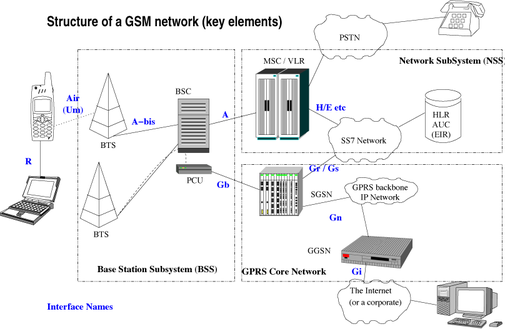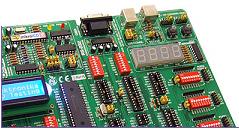Frequently Asked Questions
What are GSM, GPRS and SMS?
What is a Real-Time System?
GSM, GPRS and SMS
GSM (Global System for
Mobile communications: originally from Groupe
Spécial Mobile) is the most popular standard for mobile phones in the
world. Its promoter, the GSM Association, estimates that 82% of the
global mobile market uses the standard. GSM is used by over 3 billion
people across more than 212 countries and territories. Its
ubiquity makes international roaming very common between mobile phone
operators, enabling subscribers to use their phones in many parts of the
world. GSM differs from its predecessors in that both signalling and
speech channels are digital, and thus is considered a second generation
(2G) mobile phone system. This has also meant that data communication
was easy to build into the system.
The ubiquity of the GSM standard has been an advantage to both consumers
(who benefit from the ability to roam and switch carriers without
switching phones) and also to network operators (who can choose
equipment from any of the many vendors implementing GSM). GSM also
pioneered a low-cost (to the network carrier) alternative to voice
calls, the Short Message Service (SMS, also called "text messaging"),
which is now supported on other mobile standards as well. Another
advantage is that the standard includes one worldwide Emergency
telephone number, 112. This makes it easier for international
travellers to connect to emergency services without knowing the local
emergency number.
Short Message Service (SMS) is defined as a text-based service that
enables up to 160 characters to be sent from one mobile phone to
another. In a similar vein to email, messages are stored and forwarded
at an SMS centre, allowing messages to be retrieved later if you are not
immediately available to receive them. Unlike voice calls, SMS messages
travel over the mobile network's low speed control channel.
"Texting", as it is also known, is a fast and convenient way of
communicating. In fact, SMS has taken on a life of its own, spawning a
whole new shorthand language that is rapidly being adopted as the norm.
Newer versions of the standard were backward-compatible with the
original GSM phones. For example, Release '97 of the standard added
packet data capabilities, by means of General Packet Radio Service
(GPRS) which allows packet based Internet connections. Release '99 introduced higher speed data transmission using
Enhanced Data Rates for GSM Evolution (EDGE).
The network behind the GSM system is divided into a number of sections as shown by the picture below.

- The Base Station Subsystem (the base stations and their controllers).
- The Network and Switching Subsystem (the part of the network most similar to a fixed network).
- This is sometimes also just called the core network.
- The GPRS Core Network (the optional part which allows packet based Internet connections).
- All of the elements in the system combine to produce many GSM services such as voice calls and SMS.
One of the key features of GSM is the Subscriber Identity
Module (SIM), commonly known as a
SIM card. The SIM is a detachable smart card
containing the user's subscription information and phone book. This
allows the user to retain his or her information after switching
handsets. Alternatively, the user can also change operators while
retaining the handset simply by changing the SIM. Some operators will
block this by allowing the phone to use only a single SIM, or only a SIM
issued by them; this practice is known as SIM locking, and is illegal in
some countries.
REAL-TIME SYSTEMS
If it is required that performing a task or service requires timely response of control functionality to inputs or measurements, there is a deadline for the delivery of the service. The automation controllers must not only perform a specific functionality, they must do so within deadlines defined by the specific application, measured by the flow of time. This is usually the case when controlling parts of a physical entity (like a car). A system is considered a real-time system: when must perform specific services within specific deadlines. It is important to note that real time performance does not mean fast performance. A system could be slow but still real time. (e.g. A bell rings each hour sharp without any delay. Because the service of ringing is performed each hour on time without delays and deterministically the bell is considered real time system).
A real time system could be SOFT REAL TIME SYSTEM (when meet the deadlines with high probability) or HARD REAL TIME SYSTEM (when always meet the deadlines on time).
A real time system that performs at least one safety critical function it is called a SAFETY CRITICAL REAL TIME SYSTEM. In real time systems with safety critical functions, timeliness and predictability of the services are essential. Safety critical real time systems usually have (some) hard deadlines.

